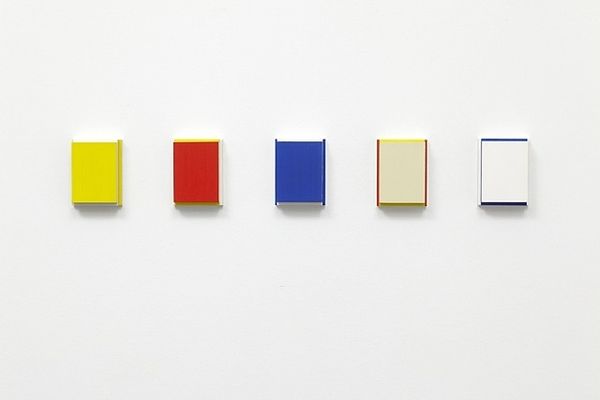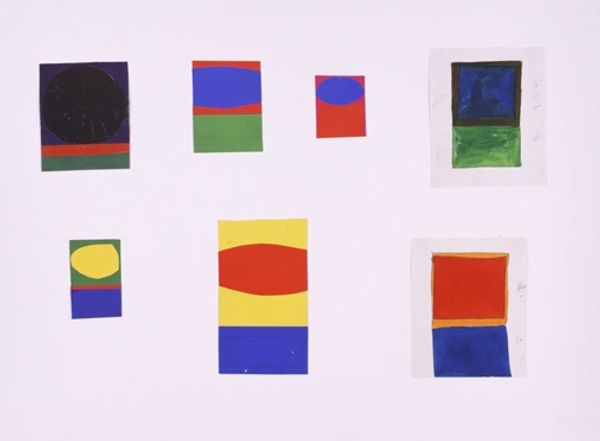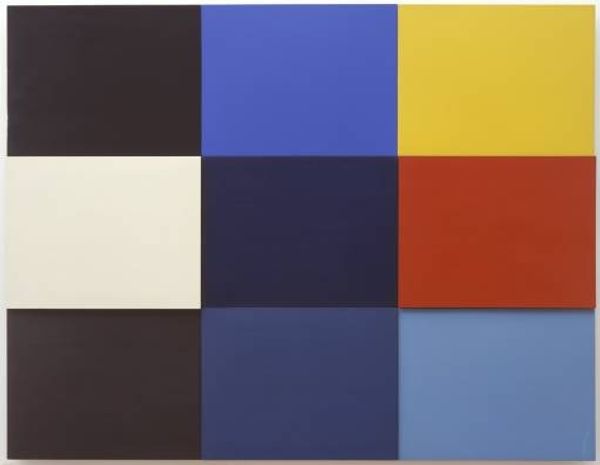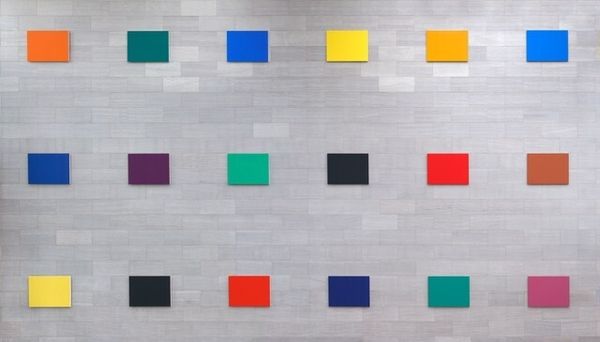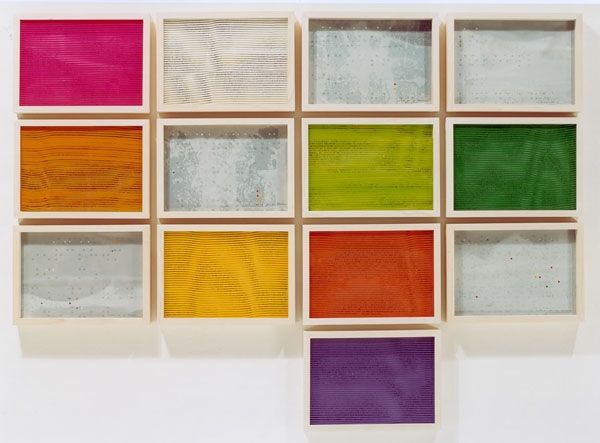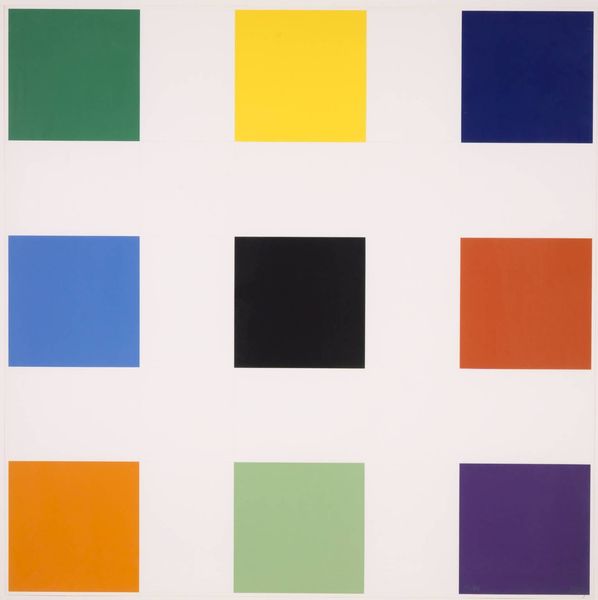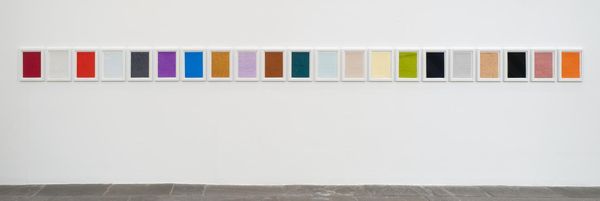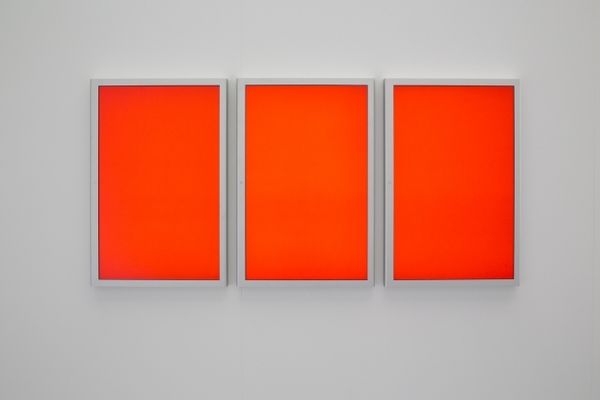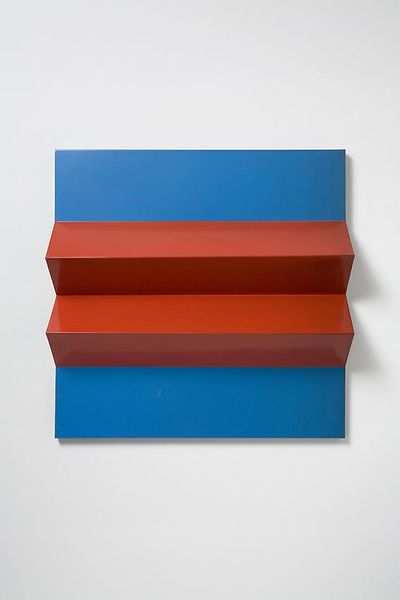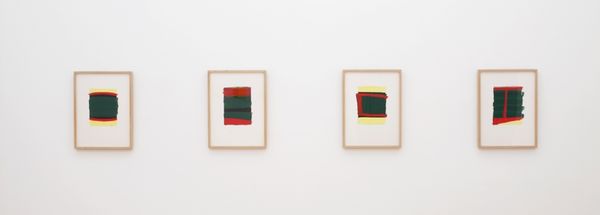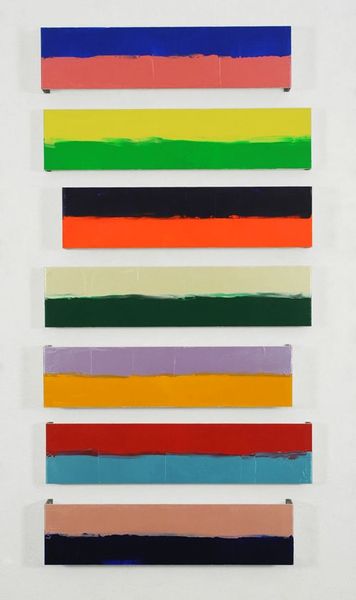
Copyright: Blinky Palermo,Fair Use
Curator: Looking at Blinky Palermo’s “Coney Island II” from 1975, I am struck by the deceptive simplicity. Four panels, each a monochrome rectangle bordered by a contrasting color. There’s a calmness to the composition. What's your first impression? Editor: Well, I'm immediately drawn to the materials. The subtle variations in the acrylic paint, the slightly imperfect edges of the panels. You can see the artist's hand. They look like mass produced objects, and the scale suggests industrial production but its handmade…deliberately. Curator: Absolutely. Palermo's work operates within this tension between the mass-produced aesthetic of Minimalism and his own, almost playful, sensibility. His place in the art world in the 1970s was an interesting reaction against abstract expressionism in some ways. Editor: Tell me more, because to my eye, its not abstract but rather reductivist; it reveals the basic components of its making and its parts and that speaks to its essence… Curator: Precisely, his engagement with the gallery space as a contextual element in his exhibition designs were about that direct engagement of the artist with an exhibition. In that time artists sought a reduction of pictorial components; the shape, the line and the pure colors speak volumes in their own. These are also important considerations of the color field movement, aren't they? Editor: Exactly. And the material qualities are central. The panels read as objects – there is something profoundly elegant about that gesture, because it seems to both honor industrial materials but bring to those mass-produced forms an act of the hand. Curator: I find myself reflecting on how Palermo, within these simple forms, manages to evoke a sense of urban space, possibly even an entertainment district as suggested by the title; a certain pop aesthetic. Editor: For me, it's that material quality again. Seeing the trace of its creation reminds us that this piece bridges art and construction. This interplay is where Palermo is most innovative; how far can it be reduced and still call itself painting? Curator: In its own unassuming way, “Coney Island II” poses complex questions about the role of art and the space within which it’s shown. Editor: Agreed, I walk away seeing a statement on our modern material reality, about industrialism’s relationship to handmade labor. These deceptively basic painted elements bring attention to art's material essence in profound and complex ways.
Comments
No comments
Be the first to comment and join the conversation on the ultimate creative platform.
